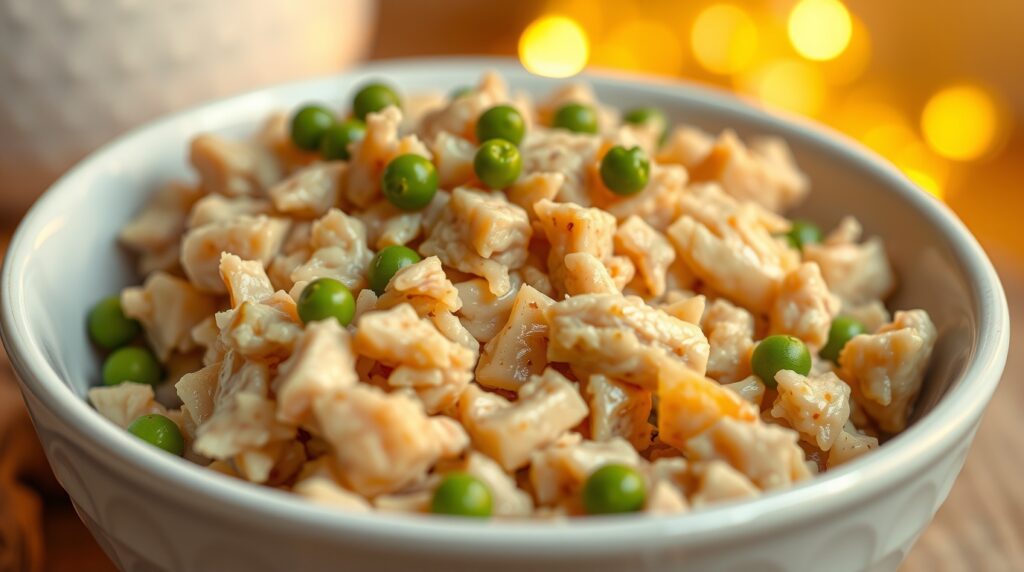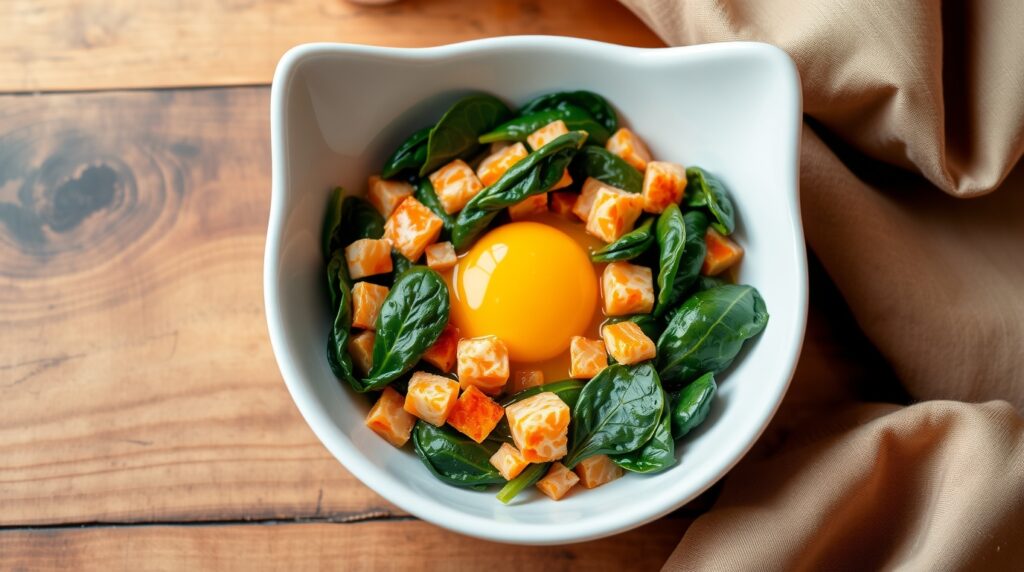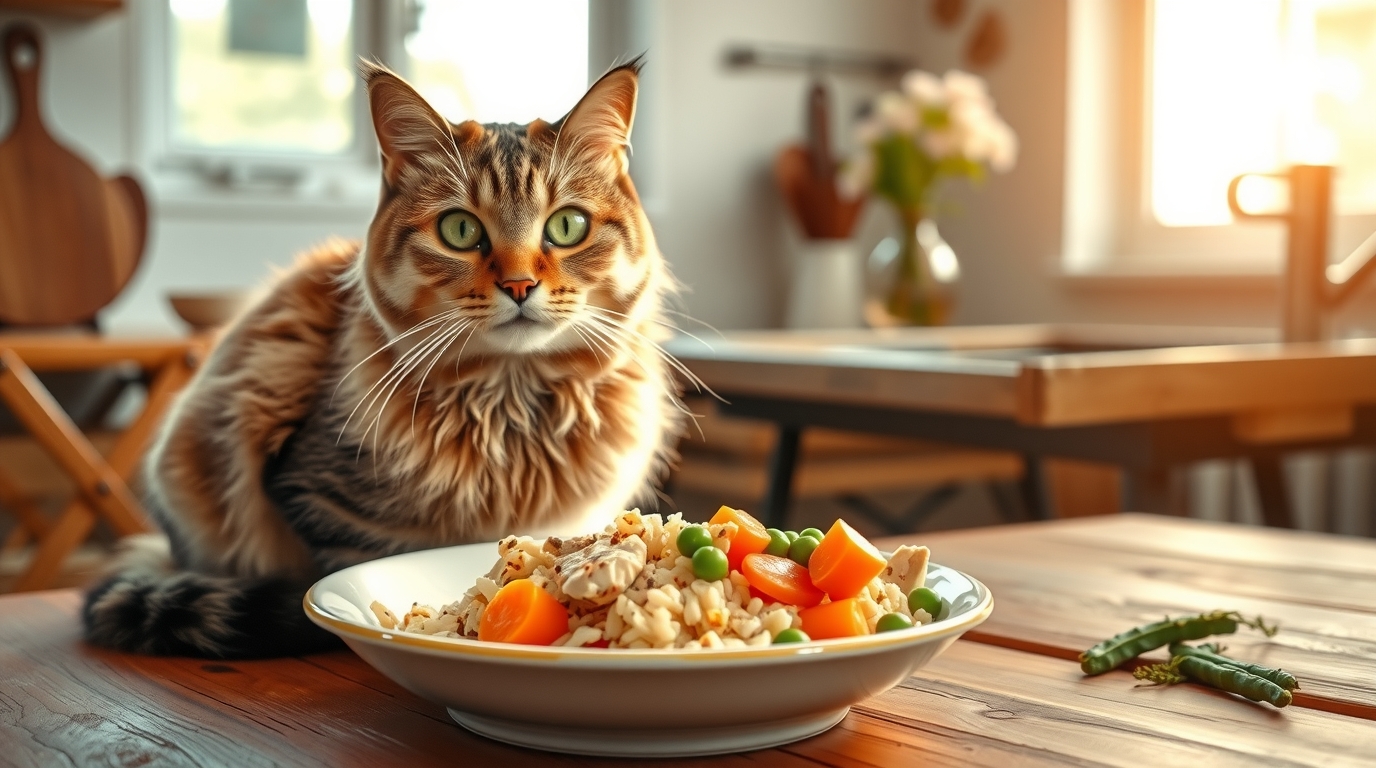If you’ve ever wondered how to make homemade cat food that’s both nutritious and delicious, you’re in the right place. While commercial cat food offers convenience, nothing matches the freshness, quality, and love that goes into a bowl of homemade cat food recipes.
Cats are obligate carnivores ,meaning they need a protein-rich diet sourced primarily from meat. However, with the right ingredients, supplements, and balance, you can easily prepare the best cat food homemade recipes at home to ensure your feline stays strong, energetic, and healthy.
In this complete guide, we’ll cover the benefits of homemade cat food, essential nutrients, vet-approved recipes, and a cat food chart for daily feeding.
Why Choose Homemade Food for Cats?
Homemade cat food isn’t just about cutting costs , it’s about control, freshness, and customization. By making your cat’s meals at home, you know exactly what goes into their bowl.
Benefits of a Homemade Cat Diet
✅ Fresh and Preservative-Free: No chemicals or artificial additives.
✅ Tailored Nutrition: You can customize for allergies, preferences, or health conditions.
✅ Better Digestion: Fresh food reduces stomach upset and improves stool quality.
✅ Shinier Coat & More Energy: Balanced nutrients promote vitality.
✅ Great for Picky Eaters: You can adjust texture, aroma, and ingredients your cat loves.
Understanding Your Cat’s Nutritional Needs
Cats require a precise balance of nutrients to thrive. A homemade cat diet should include:
- Animal Protein (60–70%) – Chicken, turkey, fish, or eggs for muscle development.
- Fats (20–30%) – Chicken fat, fish oil, or ghee to maintain skin and coat health.
- Carbohydrates (5–10%) – Small portions of rice, oats, or pumpkin for digestion.
- Taurine (Essential Amino Acid) – Vital for heart and eye health (found in meat).
- Vitamins and Minerals – Especially calcium, phosphorus, vitamin D, and B12.
- Hydration – Cats get most of their water from food, so moisture-rich recipes are best.
💡 Tip: Homemade food must always be well-cooked and portioned according to your cat’s age, size, and activity level.
Best Cat Food Homemade Recipes

Here are the top 7 best cat food homemade recipes , tried, tested, and approved by veterinarians and feline nutritionists.
1. Chicken and Rice Delight
Ingredients:
- 1 cup boiled shredded chicken
- ¼ cup cooked brown rice
- 1 tsp fish oil or olive oil
- A pinch of calcium powder
Instructions:
- Mix all ingredients while warm.
- Serve in small portions.
Benefits:
Rich in protein, healthy fats, and carbohydrates — perfect for growing or active cats.
2. Salmon & Spinach Feast
Ingredients:
- 1 cup cooked salmon (deboned)
- ¼ cup steamed spinach
- 1 tsp flaxseed oil
- 1 boiled egg yolk
Instructions:
- Combine and mash lightly.
- Serve lukewarm.
Benefits:
Omega-3 rich recipe that supports coat health, immunity, and heart function.
3. Egg and Pumpkin Power Bowl
Ingredients:
- 2 boiled eggs
- 2 tbsp cooked pumpkin puree
- 1 tsp ghee or olive oil
Instructions:
- Mash eggs with pumpkin and oil.
- Serve fresh.
Benefits:
High in protein and fiber — ideal for cats with mild digestive issues.
4. Chicken Liver Meal
Ingredients:
- ½ cup chicken liver (cooked, not raw)
- ¼ cup boiled rice or oats
- 1 tsp sunflower oil
- 1 calcium supplement (vet-approved)
Instructions:
- Cook chicken liver thoroughly to avoid bacterial contamination.
- Mix with rice and oil, serve warm.
Benefits:
Iron-rich recipe to prevent anemia and support energy levels.
5. Tuna and Vegetable Mix
Ingredients:
- 1 can of tuna (in water, not oil)
- 2 tbsp boiled peas and carrots
- 1 tsp olive oil
Instructions:
- Mix all ingredients gently.
- Serve once cooled.
Benefits:
Great for picky eaters , highly palatable and easy to digest.
6. Paneer & Rice Vegetarian Option (For occasional feeding)
Ingredients:
- ½ cup paneer cubes
- ¼ cup boiled rice
- 1 tsp ghee or flaxseed oil
Instructions:
- Mix all ingredients well.
- Serve warm and soft.
Benefits:
A good emergency vegetarian cat food recipe for cats with meat allergies (shouldn’t replace regular protein meals).
7. Balanced Chicken Veggie Stew
Ingredients:
- 1 cup boneless chicken
- ½ cup chopped vegetables (pumpkin, carrots, spinach)
- 1 tbsp rice
- 1 tsp olive oil
Instructions:
- Cook all ingredients together until soft.
- Cool and serve in small portions.
Benefits:
A complete, balanced meal that supports weight gain and strong bones.
Homemade Cat Food Chart (By Age & Weight)
| Cat Age | Meals/Day | Portion per Meal | Recommended Foods |
|---|---|---|---|
| Kitten (2–6 months) | 4 | ¼–½ cup | Chicken, rice, egg yolk, curd |
| Adult (6 months–7 years) | 2–3 | ½–¾ cup | Chicken, salmon, vegetables |
| Senior (7+ years) | 2 | ¼–½ cup | Soft rice, pumpkin, tuna |
💡 Tip: Adjust meal size based on activity level , indoor cats may need 10–15% fewer calories.
Cat Diet for Weight Gain (Homemade Plan)

If your cat is underweight, try these high-calorie homemade cat food ideas:
- Add boiled egg yolk or fish oil to regular meals.
- Include paneer, chicken liver, or sweet potato for energy.
- Offer 3–4 smaller meals daily instead of 1–2 large ones.
- Avoid fillers like bread or biscuits , focus on natural fats and protein.
Cat Food Supplements to Include
While homemade food provides excellent nutrition, cats need certain supplements for a truly balanced diet:
- Taurine: Essential for heart and vision health.
- Calcium & Phosphorus: For strong bones and teeth.
- Vitamin D & B12: Especially important in home diets.
- Omega-3 Fatty Acids: For joint and coat health.
Always consult your veterinarian before introducing new supplements.
Tips for Preparing and Storing Homemade Cat Food
- Always cook meat thoroughly to eliminate bacteria.
- No onions, garlic, salt, or spices , they’re toxic to cats.
- Store food in airtight containers in the refrigerator (max 3 days).
- Warm slightly before serving for better aroma and appetite.
- Keep clean, fresh water available at all times.
Homemade Cat Food Chart PDF (Printable)
For easy daily tracking, download the Cat Food Chart PDF that includes:
- Portion sizes by age and weight
- Feeding frequency
- Recipe planner for the week
- Supplement checklist
This handy guide helps you maintain a consistent, balanced homemade cat diet throughout your cat’s life.
Expert Vet Tips for a Healthy Homemade Cat Diet
- Transition from packaged to homemade food gradually over 7 days.
- Ensure at least 60% animal protein in each meal.
- Monitor your cat’s weight, coat, and activity for signs of nutritional success.
- Use glass or stainless-steel bowls to maintain hygiene.
- Avoid feeding only fish-based meals long-term , rotate proteins.
Signs Your Homemade Cat Diet is Working
✅ Improved energy levels and playfulness
✅ Shiny, soft coat
✅ Regular bowel movements
✅ Better appetite and hydration
✅ Steady weight and strong muscles
If you notice fatigue, dull coat, or unusual shedding, revisit your cat’s nutrient balance or consult your vet.
Final Thoughts
Creating the best cat food homemade recipes is easier than it sounds , all it takes is the right mix of ingredients, love, and care. A well-planned homemade cat diet provides fresh, chemical-free nutrition that supports long-term health, strong immunity, and happiness.
By following these healthy homemade recipes and the accompanying cat food chart, you’ll give your feline the best gift possible ,a diet crafted just for them.
And for convenience, don’t forget to download your cat food chart PDF , your go-to guide for daily, weekly, and monthly feeding success. 🐾
Also Read:


